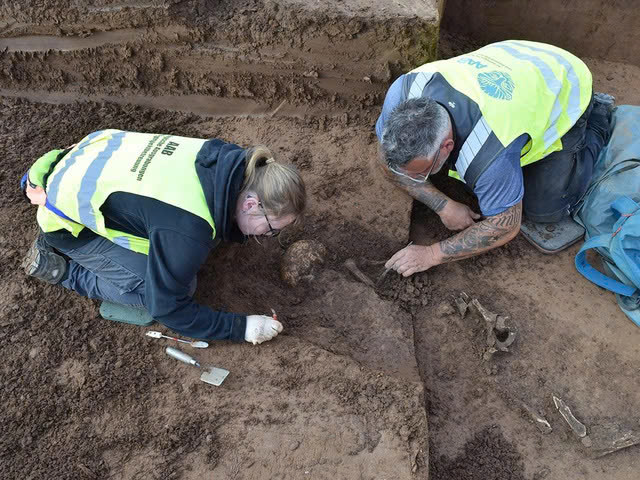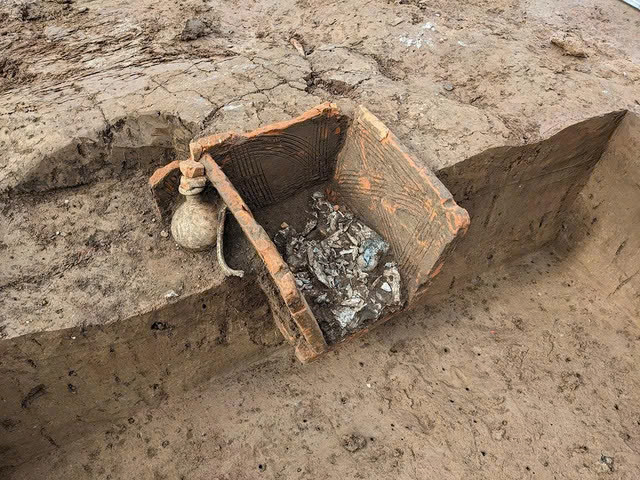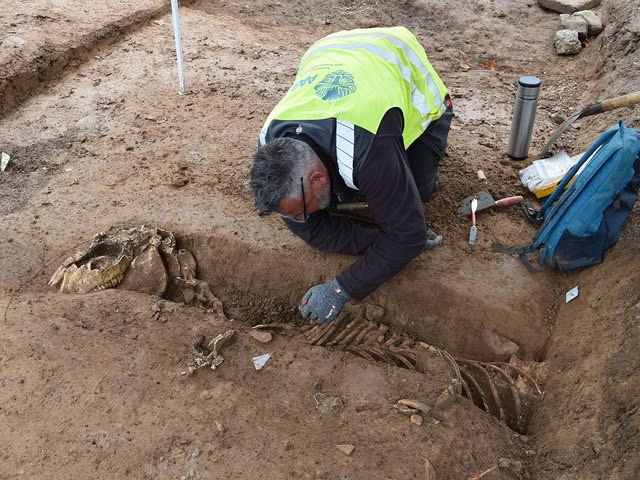In a remarkable archaeological discovery, researchers have unearthed 17 Roman graves in Heidelberg-Neuenheim, offering unprecedented insights into burial customs from nearly two millennia ago. The find, made during construction preparations, adds another chapter to one of Baden-Württemberg’s most significant Roman necropolises.
A Cemetery’s Second Life
The excavation site, positioned along the ancient Roman road to Ladenburg, has revealed itself to be far more significant than initially believed. Though previously explored between 1951 and 1969—yielding an impressive 1,400 burials—the limitations of mid-20th century archaeological techniques left hidden treasures waiting to be discovered.
“This latest excavation demonstrates how archaeological methods have evolved,” notes Sarah Roth, who leads the State Office for Monument Preservation team. “What was missed decades ago now tells us crucial stories about Roman life and death.”
The cemetery, active between the 1st and 3rd centuries CE, stretches approximately 370 meters and represents the largest known Roman burial ground in the region.
Graves That Speak Volumes
Diverse Burial Practices

The 2024 excavation, conducted by archaeological company AAB under LAD supervision, uncovered:
- 12 cremation burials, including well-preserved examples with remarkable grave goods
- 5 inhumation burials, providing evidence of changing burial practices
- A rare horse burial, suggesting complex ritual significance
One standout discovery was a meticulously constructed brick slab grave containing cremated human remains housed in a brick box with an intact lid. Three handled jugs surrounded the container, likely used in libation ceremonies during funeral rites.
Items for the Afterlife
The grave goods recovered paint an intimate portrait of Roman beliefs about death and remembrance. Ceramic plates, bowls, jugs, oil lamps, and glass beads—though damaged by time and urban development—reveal the care with which Romans prepared their dead for the afterlife.
“In ancient times, being remembered after death held paramount importance,” explains Roth. “The placement of these graves along busy Roman roads wasn’t coincidental—it ensured the departed would remain in the thoughts of passersby.”
An intriguing food offering, identified by a rib bone placed alongside a jug, demonstrates the belief that the deceased required sustenance on their journey beyond.
Challenges of Urban Archaeology
The site revealed traces of the 1966 investigation, where narrow trenches were used to locate graves—an efficient method for its time but one that missed peripheral and deeper interments. Additionally, the area’s subsequent use as a parking facility compressed and damaged some artifacts.

Despite these challenges, the preservation of certain graves offers invaluable research opportunities. Forthcoming anthropological analysis could reveal details about these individuals’ lives, health conditions, and social status, providing a more complete understanding of Roman society.
A Mosaic of Roman Life

The variety of burials suggests a diverse community, with individuals of different social standings interred in proximity. From elaborate brick constructions to simpler inhumations, the cemetery reflects the social stratification of Roman provincial life.
The discovery of a double burial—featuring one adult male positioned supine with another adult above him in a head-to-foot arrangement—demonstrates the complexity of burial practices and the potential reuse of grave spaces.
Video
Preserving the Past Amid Progress
As urban development continues throughout Europe, archaeological discoveries like Heidelberg-Neuenheim highlight the delicate balance between progress and preservation. Each excavated grave contributes to our collective understanding of Roman civilization while raising important questions about how we honor cultural heritage in expanding cities.

The findings will undoubtedly contribute to comparative studies of burial practices across the Roman Empire, potentially revealing regional variations and cultural adaptations within the imperial system.
Conclusion: Voices From Beyond
The Roman graves of Heidelberg-Neuenheim offer more than archaeological curiosities—they provide intimate glimpses into ancient lives and beliefs. Through careful excavation and study, these silent witnesses to history continue to speak, ensuring that those who wished to be remembered after death have indeed achieved their desire, nearly two thousand years later.
As researchers continue analyzing these findings, the cemetery stands as a testament to human continuity—our shared concern with remembrance, dignity in death, and the meaningful objects we choose to accompany us on our final journey.
